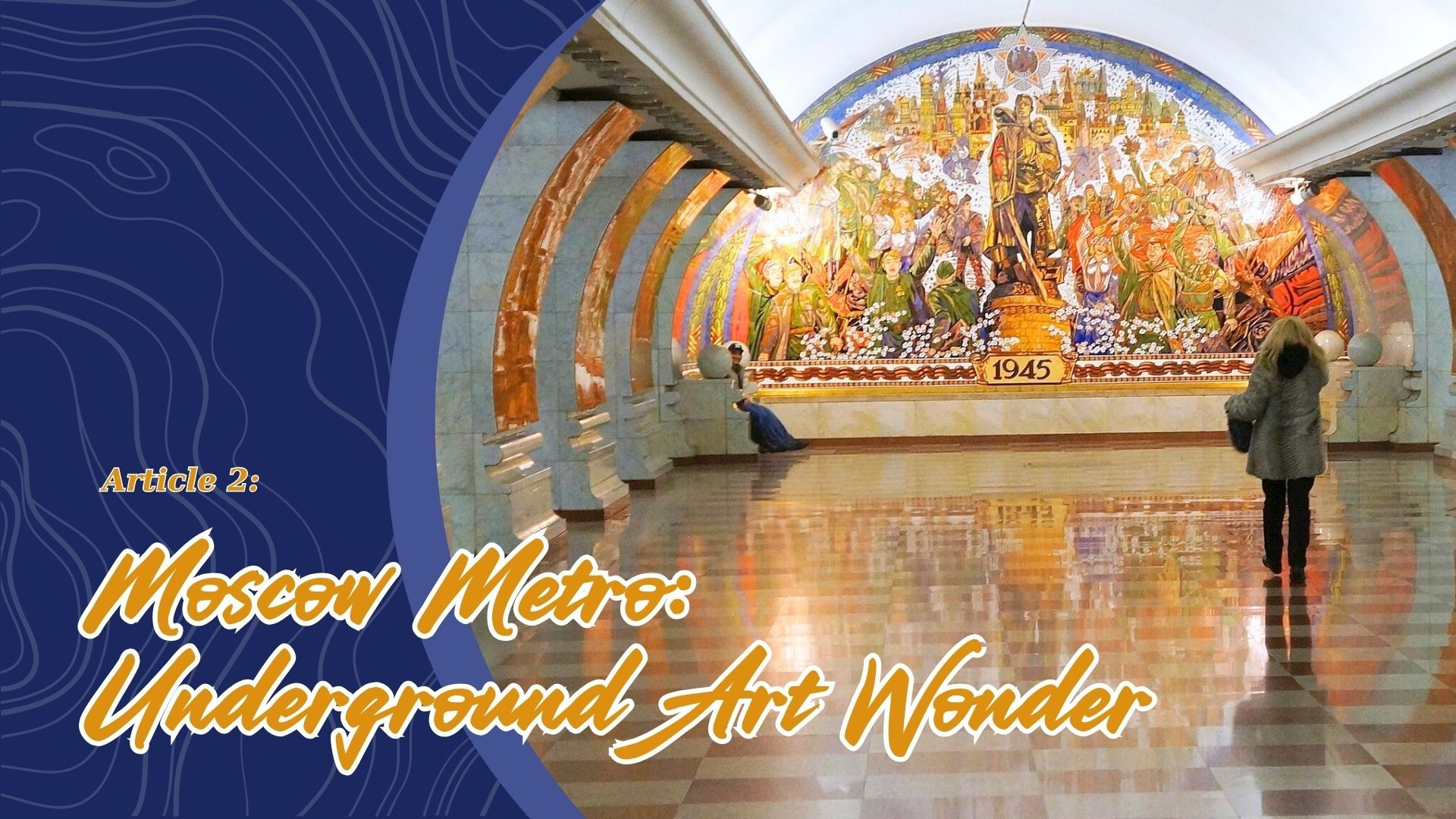
|
The Moscow metro system is not only an important means of transportation but also an underground architectural wonder, vividly reflecting the culture and history of Russia. Each station not only serves the need for transportation but is also a story of the sophistication and pride of the Russian people. |
 |
|
Opened in 1935, the first line of the Moscow Metro is 11.2 km long with 13 stations. It is not only the first underground railway but also a monumental architectural work, reflecting the power and vision of the Soviet Union. By March 2023, Russia has completed the world's largest circular line, 70 km long with 31 stations. By 2024, the system will continue to expand to more than 466 km, with 263 stations and 14 lines. |
 |
|
The Moscow Metro system is a testament to the ingenuity of leading Soviet architects. Designers like Alexey Dushkin and Dmitry Chechulin blended classical and modern architectural styles to create unique stations that bear the stamp of history and art. High-quality materials such as marble, granite, bronze, and stainless steel were used, along with advanced construction techniques like retaining walls and column bracing, ensuring a robust structure even at great depths underground. |
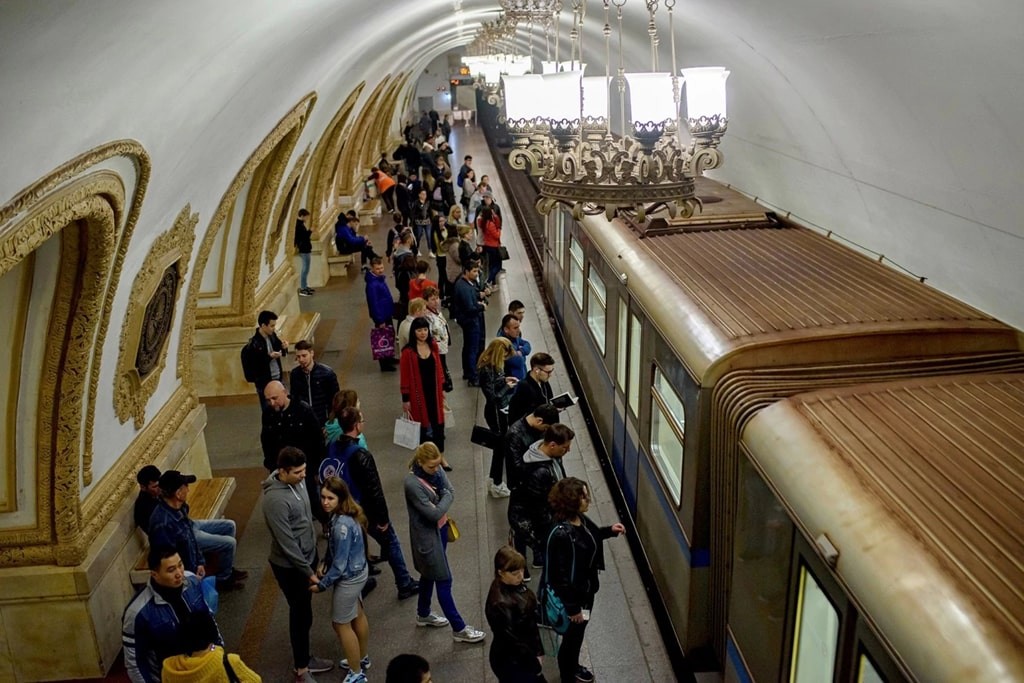
The Moscow Metro welcomes about 9 million passengers every day. (Photo: Washington Post)
|
From the very first glance, the majestic entrances of the Moscow Metro, with their sturdy granite columns and grand doors adorned with bronze or brass details, create a sense of grandeur. Stepping through these doors, visitors are enveloped in the cool, luxurious ambiance of marble and granite, illuminated by exquisite crystal chandeliers. The contrast between the cool atmosphere and the warm lighting, coupled with the announcements made in both male and female voices, creates a unique experience. Each station in the Moscow Metro system is a unique work of art, with its own distinct design, cultural and historical themes. |
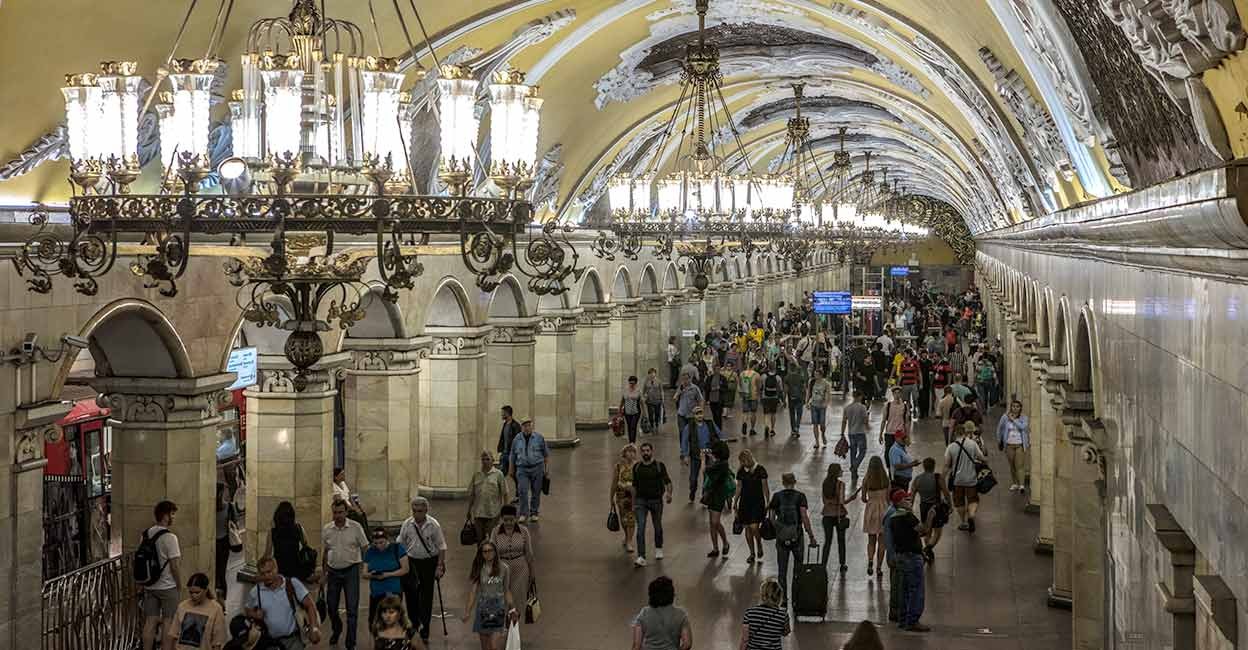
Inside the Komsomolskaya Metro Station. (Photo: iStock)
|
Komsomolskaya Station stands out with its immense golden dome and dark gray granite columns adorned with intricate gold details. The marble and mosaic paintings depict significant events in Soviet history, notably the Victory Parade of World War II, featuring historical figures, and grand military scenes. Novoslobodskaya Station is renowned for its vibrant stained-glass windows, transforming the space into an underground art museum. Designed by artist Pavel Korin, each window is unique in color and shape, creating a vibrant and imaginative depiction of beauty and mystery. Mayakovskaya Station is a testament to boundless creativity with its Art Deco design and hand-painted ceiling murals depicting the sky and the development of the Soviet Union. The ceiling is adorned with pyramidal, star-shaped motifs and other decorative elements that harmoniously blend with the light from the crown-shaped chandeliers. It was the site of a historic meeting in November 1941 when Stalin ordered the defense of Moscow during World War II. Kievskaya Station symbolizes the friendship between Russia and Ukraine during the Soviet era. The intricate mosaics here not only depict the lives of the people but also evoke the historical and cultural ties between the two nations. The mosaics portray the unity and cooperation of the peoples, with intricate cultural and historical details, from traditional clothing to characteristic cultural symbols. |

|
Ploshchad Revolyutsii Station is renowned for its 76 bronze sculptures by Matvey Manizer, depicting various aspects of Soviet history from the October Revolution to life under socialism. These sculptures are not only significant works of art but are also deeply ingrained in Moscow's folklore.
Muscovites believe that rubbing the nose of the bronze dog at Ploshchad Revolyutsii Station will bring them good luck. (Photo: m24.ru) One famous legend revolves around the statue of the sailor and his bronze dog. Muscovites believe that rubbing the dog's nose brings good luck, especially for students during exam periods. As a result, the dog's nose has become shiny from being touched countless times. |

|
More than just a means of transportation, the Moscow Metro is a vibrant cultural hub. Mayakovskaya Station frequently hosts classical and jazz concerts, while Kropotkinskaya Station serves as a stage for folk music performances by street artists. At Arbatskaya Station, small cafes offer pirozhki and blini, providing a relaxing atmosphere. Dostoevskaya Station hosts literary and artistic events, transforming it into an underground exhibition hall. Chistye Prudy Station is renowned for its bookstores and literary discussions. |
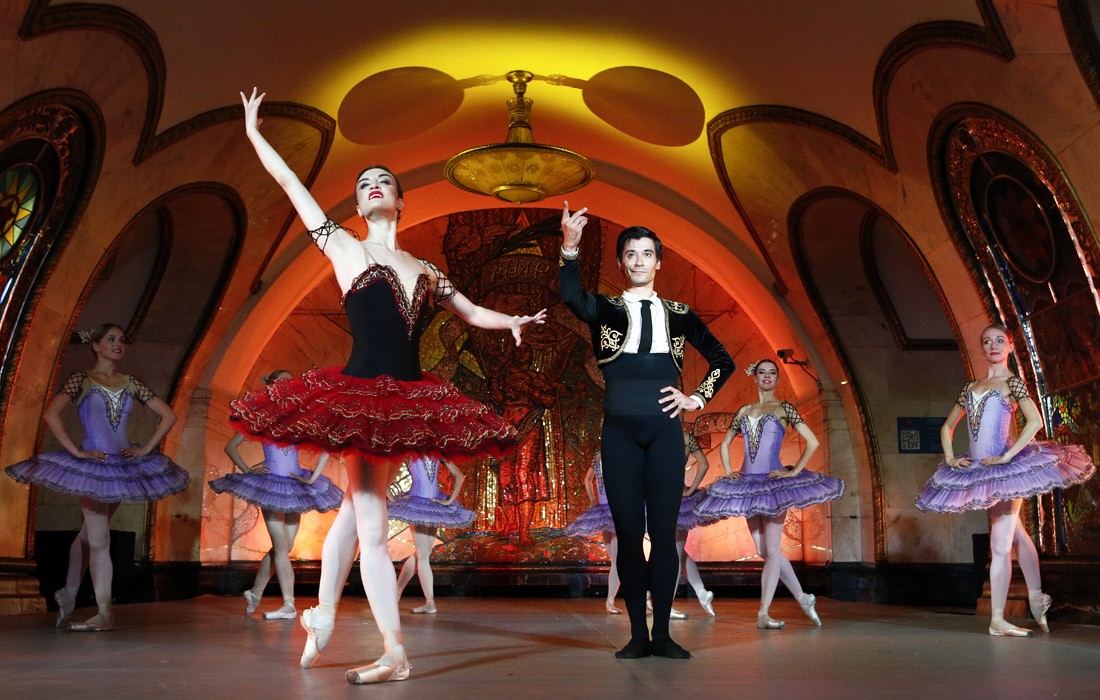
A performance at Novoslobodskaya Metro Station (Moscow) by the Kremlin Ballet. (Photo: Reuters)
|
The Moscow Metro has become an integral part of the city's cultural and historical memory. Nguyen Bach Duong, a Vietnamese former exchange student, fondly recalls the metro's modern amenities, such as air conditioning, destination displays, USB charging ports, and reliable Wi-Fi. She particularly appreciates the metro's punctuality, with trains arriving every three minutes. Professor Nguyen Canh Toan, who lived and studied in the Soviet Union decades ago, shared on his social media that he often learned Russian while riding the metro. The station announcements became part of his language learning method, with male voices announcing stations on inbound trains and female voices on outbound trains. He also highlighted 10 features of the Moscow Metro, including speed and punctuality, affordability, cleanliness, safety, high capacity, comfortable temperature, convenience, aesthetics, priority for passengers, and the high number of people reading books. |

|
Despite being a cultural and artistic icon, the Moscow Metro is facing several challenges. Overcrowding and increasing traffic pressure, especially during rush hour, are becoming more prevalent. Additionally, infrastructure maintenance issues are emerging, as some stations and lines require upgrades to ensure safety and operational efficiency. |
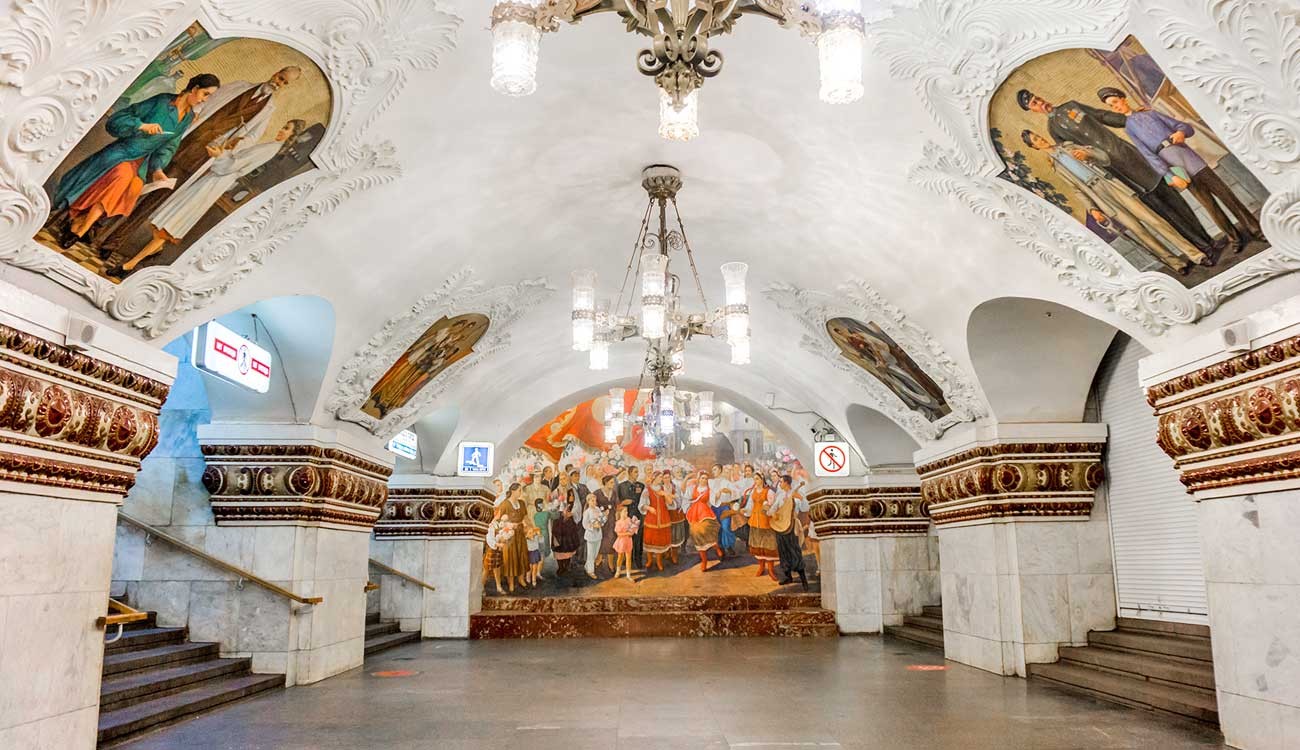
Murals at Kievskaya Station. (Photo: unesco.ru)
|
To address these challenges, the Moscow government has implemented several solutions. They are expanding the metro network by constructing new stations and extending existing lines. By 2025, an additional four stations are expected to be operational. Contactless payment systems and advanced traffic management technologies are being introduced to reduce congestion and improve efficiency. Security and sanitation measures have also been enhanced, including the installation of surveillance cameras, and regular maintenance. Additionally, reducing air and noise pollution is a priority, with measures such as noise reduction systems and improved ventilation. The government is also developing support services, such as restaurants and shops at major stations, to enhance the passenger experience. |
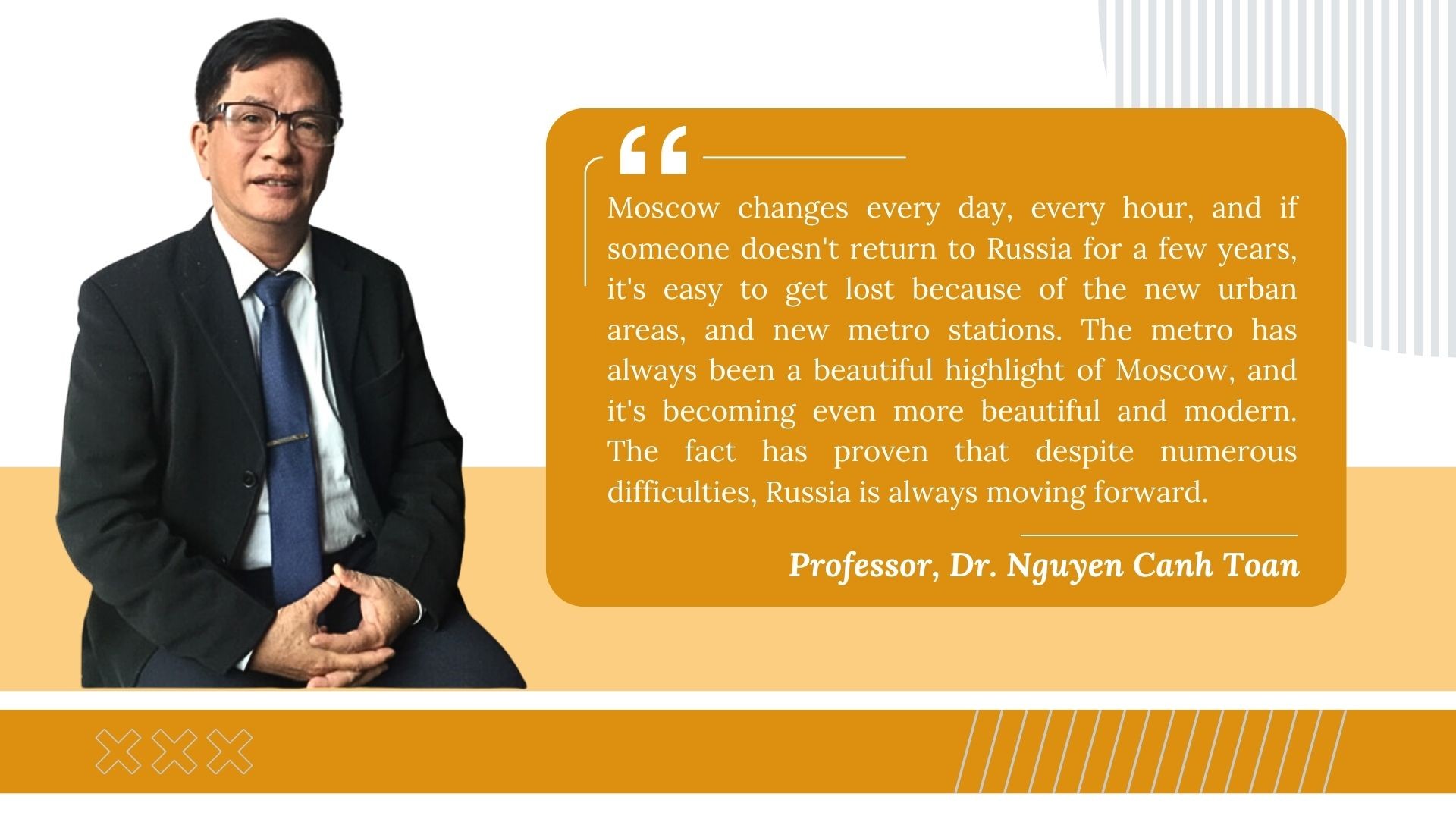 |
 |
Thanh Luan, Mai Anh